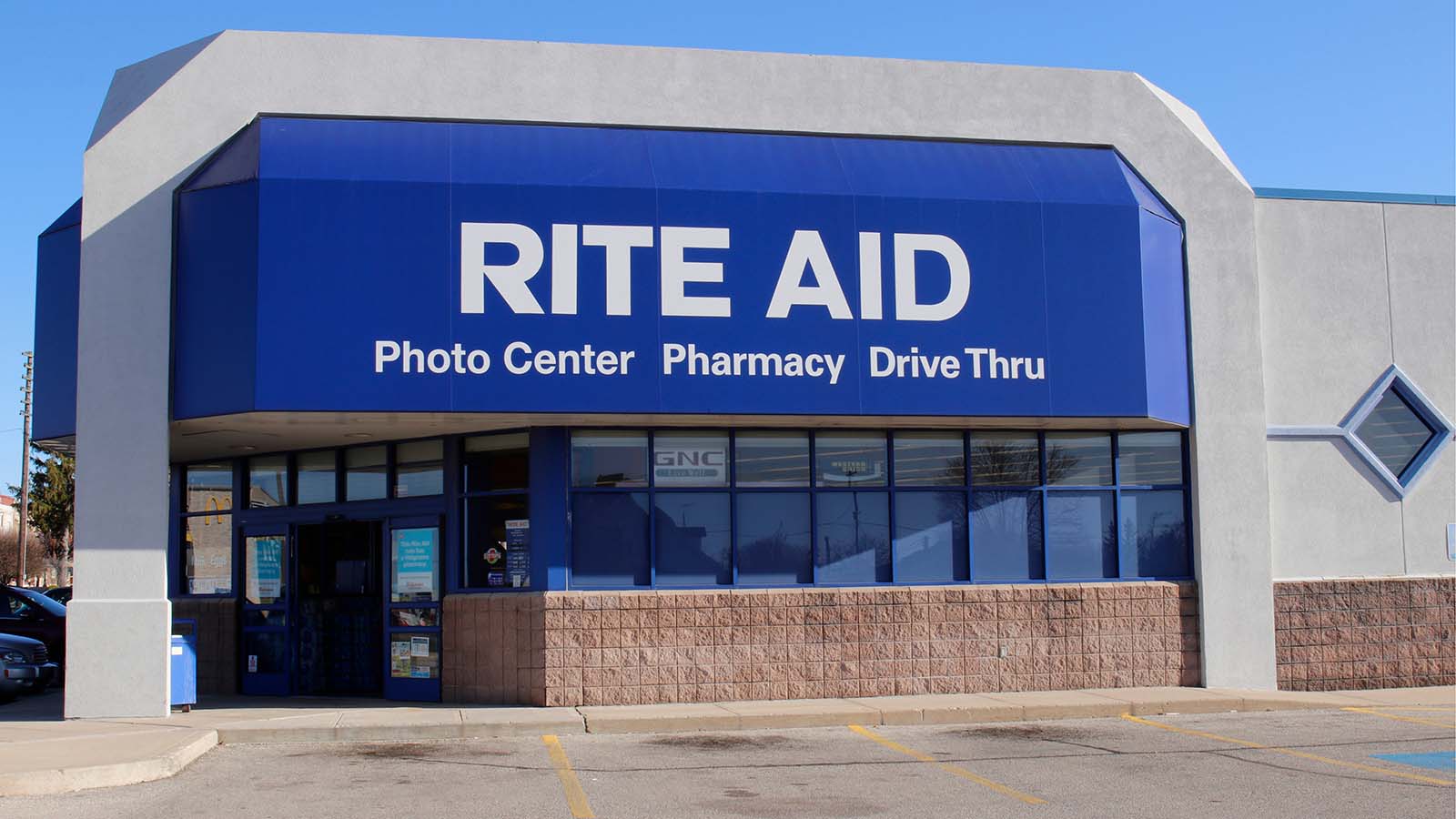It seems like Rite Aid (NYSE:RAD) finally is headed in the right direction. New management has re-inspired investor confidence and fiscal first quarter results from last month looked impressive. As a result, RAD stock has soared, more than tripling from August lows.

Despite that good news, I’m not quite convinced. I’ve been a Rite Aid skeptic for some time now. Q1 numbers, as impressive as they appear, aren’t quite enough to change my mind — yet.
After all, one quarter doesn’t completely change the story here. Secular headwinds continue to buffet the industry, profits aren’t growing and the balance sheet is a concern.
At the very least, Rite Aid still has a lot of work left to do. And I’m not yet willing to bet that it will succeed in doing so.
A Blowout Quarter – Right?
Admittedly, Rite Aid’s first quarter numbers look spectacular. Investors certainly thought so: RAD stock gained 26% on the release. After some volatility, the stock has kept gaining.
The big piece of news was Rite Aid’s same-store sales. Those numbers rose an impressive 6.6% year-over-year. That includes a whopping 16% jump in so-called front-end same-store sales excluding tobacco. The pharmacy business held up as well, with sales up 2.2%.
The hope for bulls heading into the release was the quarter would be better than feared. It looks like the quarter was in fact simply excellent.
But I’d take a bit of a closer look at the release. The same-store sales numbers no doubt benefited from the spread of the coronavirus, as even management admitted. Rite Aid likely got an extra bounce given its geographic footprint.
After the sale of over 1,900 stores to Walgreens Boots Alliance (NASDAQ:WBA), its remaining locations are situated on America’s coasts. And so Rite Aid sat in the middle of so-called “hotspots” in states like New York and California, benefiting from its status as “essential.”
There’s another problem and that’s profits. Rite Aid’s Adjusted EBITDA (earnings before interest, taxes, depreciation and amortization) actually declined year-over-year. Management cited a $30 million impact from coronavirus costs, but there also was a significant boost to revenue from the pandemic. Margins likely benefited from reduced discounting as well.
Certainly, the quarter could have been much, much worse. Rite Aid gets credit for execution. But taking the broader view, Q1 hardly guarantees that Rite Aid is firmly back on the right track.
The Broader Trend
After all, this is a business that’s been heading in the wrong direction for some time. Adjusted EBITDA in fiscal 2017 (ending February 2018) was $849.3 million, excluding the stores sold to Walgreens. That number was just $538 million last year, and original guidance for this year suggested little if any growth.
There’s been a narrative since the original Walgreens deal broke that Rite Aid’s problem was management, in particular former CEO John Standley. But that narrative seems a bit thin to me.
Investors can simply look elsewhere in the sector to see proof of what I’m talking about. Walgreens saw operating profit fall by almost 10% last year, and the declines have accelerated in the first half of its fiscal 2020 (it will be interesting to see if WBA sees a similar tailwind when it reports earnings this week). Walgreens stock hit a six-year low in March.
CVS Health (NYSE:CVS) has struggled as well. Reimbursement rates from insurers are dropping. Savings on generic drugs aren’t keeping pace. Even Rite Aid’s bulk purchasing deal with McKesson (NYSE:MCK) hasn’t been enough.
The narrative around pharmacy stocks for years was that the business was safe and defensive. That’s just not the case anymore. It’s a challenged industry. The pressure on Rite Aid earnings is not simply a management problem, which means it won’t be an easy fix for new CEO Heyward Donigan.
Competition is Coming for RAD Stock
The problem is that the broader trends aren’t likely to change. Amazon (NASDAQ:AMZN) looms as a possible threat, as it is to pretty much every retailer. As I’ve detailed before, AMZN’s acquisition of PillPack positions it to enter the space in a big way. Walmart (NYSE:WMT) and Costco (NASDAQ:COST) are players in the space as well.
The long-term issue for RAD stock is that its story isn’t all that different from any other brick-and-mortar retailer. Competition is intense and fixed costs are high. If sales don’t grow at a respectable clip, earnings quickly head south.
That profile has led investors to lose a lot of money on what look like ‘cheap’ stocks. But Rite Aid’s profile is even more concerning. It has more debt than most any other retailer. Interest expense is a huge problem, which limits the amount of cash Rite Aid can use to invest in stores and reduce that debt.
Simply put, there are significant long-term problems here. A single quarter with a big short-term boost doesn’t fix those problems. It’s going to take several more quarters for Rite Aid to prove that it’s truly back on track.
Matthew McCall left Wall Street to actually help investors — by getting them into the world’s biggest, most revolutionary trends BEFORE anyone else. The power of being “first” gave Matt’s readers the chance to bank +2,438% in Stamps.com (STMP), +1,523% in Ulta Beauty (ULTA) and +1,044% in Tesla (TSLA), just to name a few. Click here to see what Matt has up his sleeve now. Matt does not directly own the aforementioned securities.
